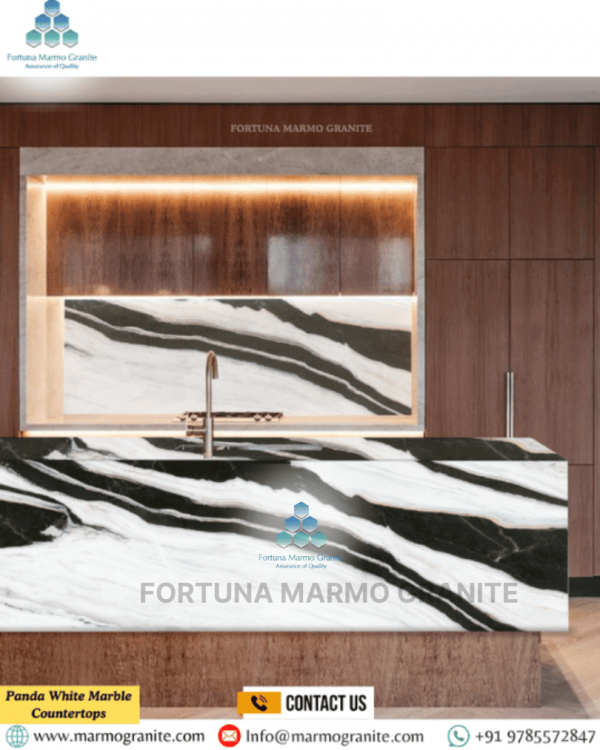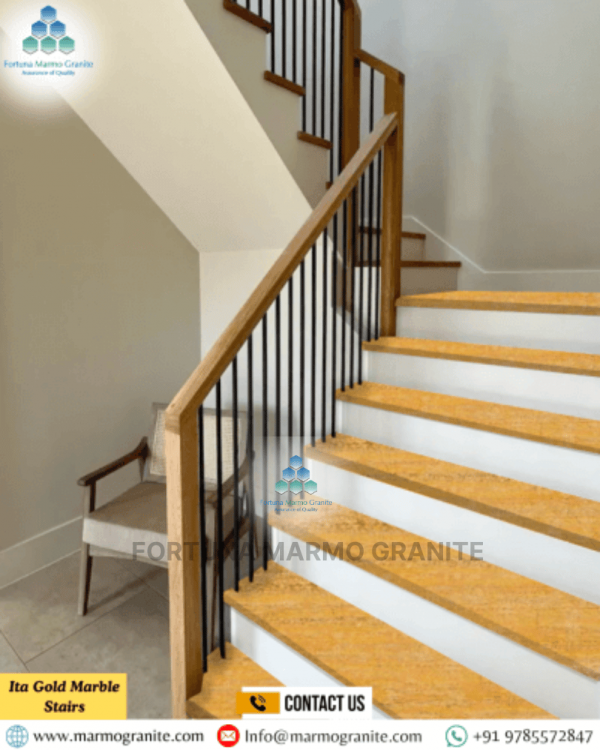5 Essential Things to Know Before Buying Marble: A Smart Buyer's Guide
5 Essential Things to Know Before Buying Marble — Marble is more than just a stone—it is a legacy carved by nature and refined by human hands, symbolizing prestige and permanence. For centuries, it has graced temples, palaces, and distinguished residences, silently telling stories of civilizations past and architectural brilliance. Choosing marble for your interiors or exteriors means inviting a piece of Earth's deep history into your space. Each slab is unique, with veins and patterns formed over millions of years, like a fingerprint, ensuring no two installations are identical.
Yet, as captivating as marble is, it requires careful consideration before purchase. It comes in a wide range of colors, finishes, and grades—each with distinct properties, durability, and maintenance requirements. Knowing the differences between types like Carrara, Calacatta, or Statuario, or understanding the effects of polished versus honed finishes, can greatly impact the outcome of your project. Additionally, factors such as origin, porosity, strength, and susceptibility to staining or etching play a critical role in choosing the right marble for your application.
1. Understanding Marble Types, Origins, and Aesthetics: More Than Just "White Stone"
Carrara Marble (Italy): Perhaps the most famous, Carrara marble features a soft white to bluish-grey background with delicate, feathery grey veining. Designers often use it for sculptures, countertops, and floor tiles. Its subtle elegance makes it a timeless choice.
Calacatta Marble (Italy): Also from Italy, Calacatta resembles Carrara but displays a whiter base with bolder, more dramatic veining in shades of grey to gold. Its rarity and striking appearance make it more luxurious and often more expensive.
Statuario Marble (Italy): This Italian marble is even purer white than Calacatta and showcases strong, distinctive grey veins. Its crisp, clean look makes it a favorite for high-end applications where a pristine aesthetic is desired.
Emperador Marble (Spain/Turkey): Known for its rich brown tones with lighter veining, Emperador marble ranges from dark brown (Dark Emperador) to warmer, lighter browns (Light Emperador). Its sophisticated, grounded aesthetic suits both traditional and contemporary interiors.
Makrana Marble (India): Famous for its use in the Taj Mahal, Makrana marble holds deep historical and cultural significance in India. This pure white marble is prized for its exceptional purity, durability, and crystalline appearance. Over time, it develops a beautiful yellowish patina from the natural oxidation of minerals.
Verde Alpi (Italy): A striking green marble featuring light green to white veins, Verde Alpi makes a bold natural statement. While less common for countertops, it creates stunning accent walls, fireplace surrounds, or decorative features.
2. Durability, Porosity, and Maintenance: The Practical Realities
While marble is undeniably beautiful, it's essential to approach its purchase with a realistic understanding of its practical properties. Marble is a relatively soft, porous stone compared to granite or quartzite. This isn't a drawback, but rather a characteristic that dictates how it should be used and cared for.
Durability:
- Scratch Resistance: Marble is susceptible to scratching, especially from abrasive materials or sharp objects. This means cutting directly on a marble countertop is a definite no-no.
- Etching: One of marble's most notable characteristics is its vulnerability to etching. Acidic substances (lemon juice, vinegar, wine, certain cleaning products) react with the calcium carbonate in the marble, dissolving the surface and leaving a dull, etched mark. These aren't stains but rather surface damage.
- Chipping/Cracking: While strong, marble can chip or crack under heavy impact, particularly at edges or corners.
Porosity and Staining:
Marble is porous, meaning it has tiny capillaries that can absorb liquids. This makes it susceptible to staining from oils, pigments, and other liquids if not properly sealed.
Maintenance:
- Sealing is Essential: Before use and at regular intervals (typically annually, but test your stone), marble must be sealed. Sealing fills the pores, making the stone more resistant to liquid absorption and thus more stain-resistant. However, a sealant does not prevent etching.
- Immediate Cleanup: Spills, especially acidic ones, should be wiped up immediately to prevent etching and staining.
- Gentle Cleaning: Use only pH-neutral cleaners specifically designed for natural stone. Harsh chemicals, abrasive cleaners, and acidic solutions should be avoided at all costs.
- Protection: Use cutting boards, trivets, and coasters to protect marble surfaces from scratches, heat, and spills.
Finishes: Polished, Honed, and Beyond
The finish applied to marble profoundly impacts its appearance, feel, and maintenance requirements. Don't assume all marble comes in a high-gloss polish.
- Polished Finish: This is the most common and classic marble finish. It involves grinding and buffing the stone to a high sheen, resulting in a reflective, mirror-like surface that enhances the stone's color and veining. Polished marble looks luxurious and elegant, but it shows scratches and etching more readily due to its reflective nature.
- Honed Finish: A honed finish is achieved by stopping the grinding process before the stone becomes shiny. The result is a smooth, matte, or satin surface with little to no sheen. Honed marble offers a softer, more natural look. It is less prone to showing etching (though etching still occurs), but it can be slightly more susceptible to staining because its pores are more open, making proper sealing even more critical.
- Leathered Finish: This finish involves brushing the stone to create a textured surface that has a subtle sheen. It's durable, hides fingerprints and water spots well, and offers a unique, tactile experience. It's gaining popularity for its modern yet organic appeal.
Sourcing and Fabrication: The Experts You Need
Buying marble isn't just about selecting a slab; it's about partnering with the right professionals for sourcing, fabrication, and installation.
Slab Yards and Showrooms:
- Visit in Person: Always visit a reputable slab yard or showroom. Pictures online don't do justice to the unique beauty and scale of marble slabs. Seeing the full slabs allows you to appreciate the flow of veining, the variations in color, and how light interacts with the stone.
- View Multiple Slabs: Natural stone varies, even within the same quarry batch. View several slabs of your chosen marble type to ensure consistency with your expectations.
- Check for Imperfections: While natural variations are part of marble's charm, look for significant fissures, cracks, or large mineral deposits that might compromise the stone's integrity or aesthetic. Reputable suppliers will inform you of any such characteristics.
5. Budgeting and Value: Beyond the Sticker Price
Cost Influencers:
- Rarity and Origin: Rarer marbles, particularly those from specific quarries like Calacatta or Statuario, will command higher prices due to limited availability and high demand. Marbles from distant quarries also incur higher shipping costs.
- Color and Veining: Purer whites and more dramatic, distinctive veining patterns often cost more.
- Thickness: Thicker slabs (e.g., 3 cm vs. 2 cm) generally cost more per square foot.
- Finish: Special finishes like leathered or custom-honed might add to the cost compared to a standard polished finish.
- Fabrication Complexity: Intricate edge profiles, multiple cutouts, unusual shapes, and complex installations will increase fabrication and installation costs.
- Sealing and Maintenance Products: Factor in the recurring cost of sealants and specialized cleaning products.
Long-Term Value:
While the upfront cost can be significant, consider the long-term value marble adds to your home:
- Timeless Appeal: Marble never goes out of style. Its classic beauty transcends trends, ensuring your investment remains relevant and aesthetically pleasing for decades.
- Increased Property Value: High-quality natural stone, particularly marble, is a desirable feature that can significantly enhance your property's resale value.
- Durability (with Care): Despite its softness, marble is incredibly durable when properly cared for. A well-maintained marble surface can last a lifetime, unlike engineered materials that might need replacement sooner.
- Unique Artistry: Each slab of marble is a unique work of art crafted by nature. This inherent individuality adds an unparalleled level of sophistication and personality to your space.



